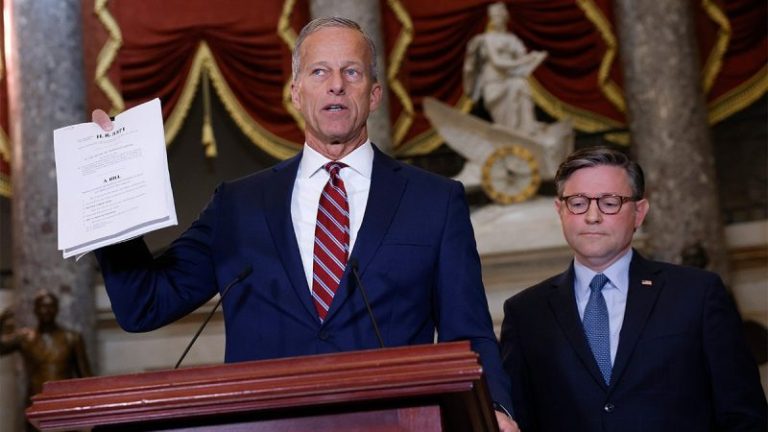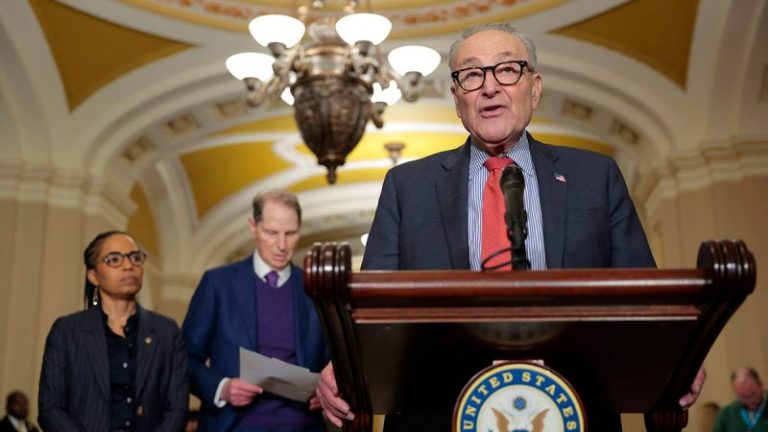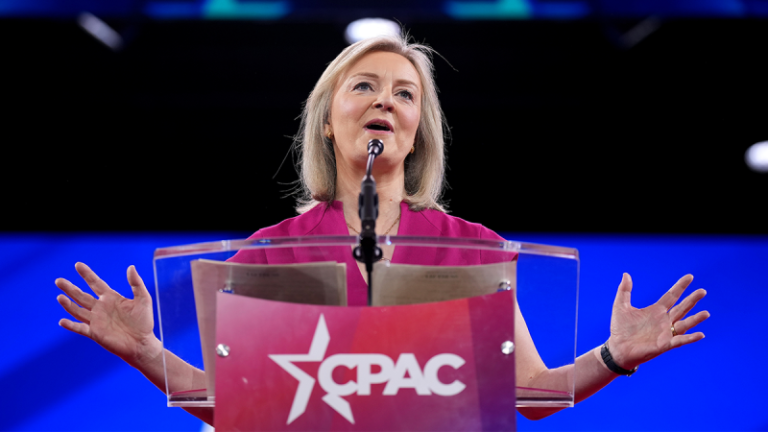In an exclusive interview with Fox News Digital, Liz Truss pulls back the curtain on what really happened during her 49-day reign as prime minister of the United Kingdom in 2022.
The free speech advocate served just 49 days as British prime minister in 2022 before resigning amid market turmoil over her administration’s dramatic attempt to implement a pro-growth economic agenda. Now that the dust has settled, Truss has launched a private club for ‘pro-growth leaders,’ the Leconfield, and a YouTube show, ‘The Liz Truss Show.’
‘My new show will tell the truth about what happened in 2022,’ Truss told Fox News Digital. ‘The fact that I was sabotaged by the Bank of England, who announced the sale of gilts the day before my mini-budget and then failed to properly regulate the pension market. That was actually the cause of the crisis in 2022.’
While Truss is now recasting the narrative on the Bank of England, the financial institution has blamed Truss for the British market crash of 2022, concluding that her mini-budget triggered a sudden plunge in gilt prices, driving up the government’s borrowing costs. The spike rippled across financial markets, pushing pension funds to offload gilts and forcing the Bank of England to intervene to stabilize the market.
The Bank of England declined to comment when reached by Fox News Digital.
‘I will be talking about that. I’ll also be talking about the conservatives in name only who undermined me while I was in power,’ Truss said of her show, eliciting President Donald Trump’s ‘RINO’ nickname for Republicans in name only who thwart his agenda.
It’s not Truss’ only commonality with Trump.
‘I’m very frustrated by the mainstream media,’ Truss said. ‘I share President Trump’s annoyance with the BBC. He is currently suing them for propagating fake news about him, but they do fake news the whole time.’
Trump has announced plans to file a $5 billion lawsuit against the British Broadcasting Corporation over an edit of his Jan. 6, 2021, remarks that appeared in a BBC investigative series. The BBC did not immediately respond to Fox News Digital’s request for comment.
Truss said she wants her YouTube show to ‘help change the economic and political debate in Britain.’
‘I know the truth wasn’t told about my time as prime minister,’ Truss said. ‘That’s very frustrating, but I know about other issues, whether it’s free speech or migration, people are not hearing about what’s actually happening in Britain, so I want my show to tell the truth and to hear from the people that are the victims of these problems.’
Truss’ early guests included Trump-ally Steve Bannon and British political commentator Matt Goodwin. The former prime minister spoke to Fox News Digital in Washington, D.C., ahead of its inaugural episode.
‘I want America, first of all, to understand what happens when you lose things like free speech, and you lose the battle on mass migration, and you lose the battle on the economy,’ Truss said. ‘It’s a warning for America, but I also want to get inspiration from what’s happened here at fighting back against these forces, and that’s what the show is about. I want to encourage people. It’s not just doom and gloom. It is about what do we actually do? How do we get a Trump-style revolution in Britain and Europe to make our countries great again?’
At the core of the cultural battles dominating popular culture, Truss said, ‘All of these people hate Western civilization.’
‘They hate the nation state,’ Truss continued. ‘They want to undermine the family, and that is why I’m so passionate about fighting back against them, because I believe in our country. I believe in the Christian values that formed Britain and America. I believe in free speech, and I think we’re just in real danger of losing them to these forces.’
Truss has applauded Trump’s leadership on the world stage, calling him ‘very forward-leaning’ in negotiating peace in the Middle East.
Truss said she wants a solution in Ukraine, but not one that makes President Vladimir Putin appear to walk away from the conflict on his own terms. She urged Europe to ‘step up’ and ‘spend more of our own money on defense’ — reflecting many congressional Republicans’ message as the war in Ukraine has waged on.
Congress has voted to send more than $175 billion to Ukraine since the war began, according to The Council on Foreign Relations. And while the U.S. has committed more aid to Ukraine than any other country, European countries have collectively committed more than the U.S.
‘We need to grow our economies to be in a position to be able to stand up to Putin ourselves,’ Truss said.
While Trump continues to pursue peace negotiations in the Middle East and between Russia and Ukraine, Truss applauded the president for taking action against suspected drug traffickers from Venezuela.
‘There’s definitely very, very serious issues with Venezuela, and it’s sadly a country that used to be successful and rich and has now been ruined essentially by a communist regime,’ Truss said. ‘I understand the United States needs to take action because the cartels that come out of countries like Venezuela are a direct security threat to the United States.’
The Trump administration deployed two fighter jets over the Gulf of Venezuela on Tuesday and has faced scrutiny in recent days for allegedly authorizing a second strike on suspected drug trafficking boats in Venezuela.
The White House told Fox News Digital last week that as commander in chief, Trump has ‘full authority to use every element of American power to stop drugs from flooding into our country.’
‘As President Trump has said, all options are on the table as he works to combat the scourge of narcoterrorism that has resulted in the needless deaths of thousands of innocent Americans,’ White House spokeswoman Anna Kelly said in a statement to Fox News Digital. ‘All of these decisive strikes have been in international waters against designated narcoterrorists bringing deadly poison to our shores.’
Fox News Digital’s Diana Stacy contributed to this report.
This post appeared first on FOX NEWS










